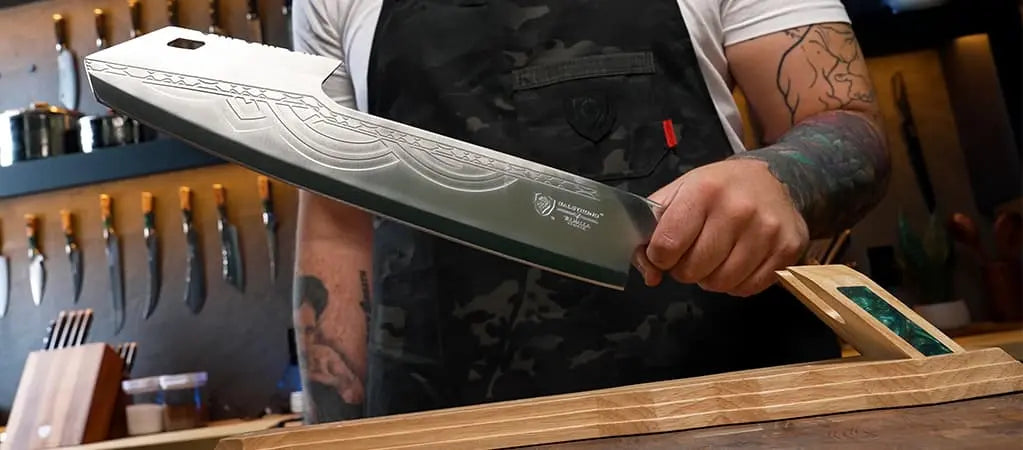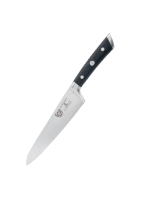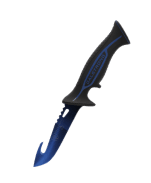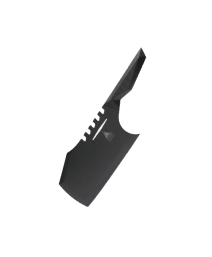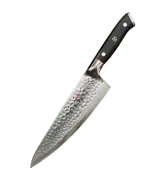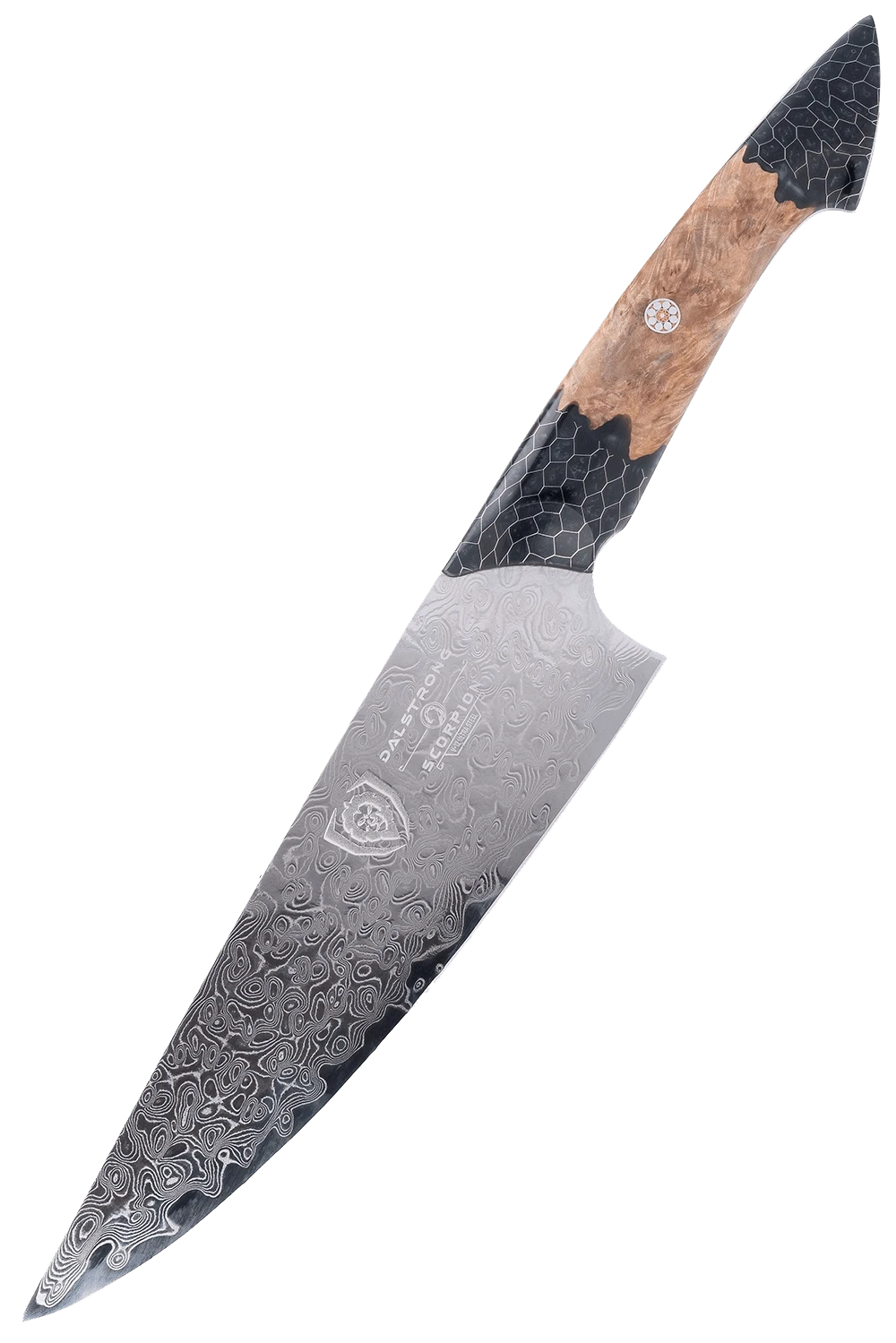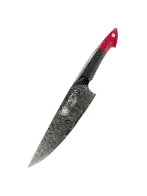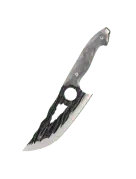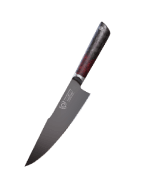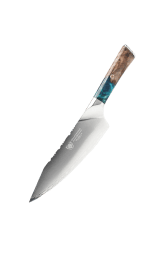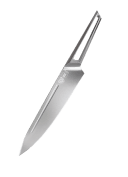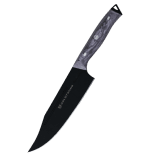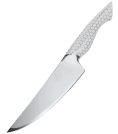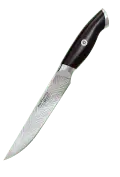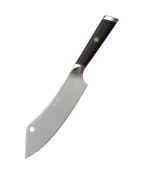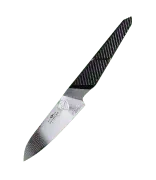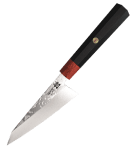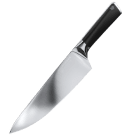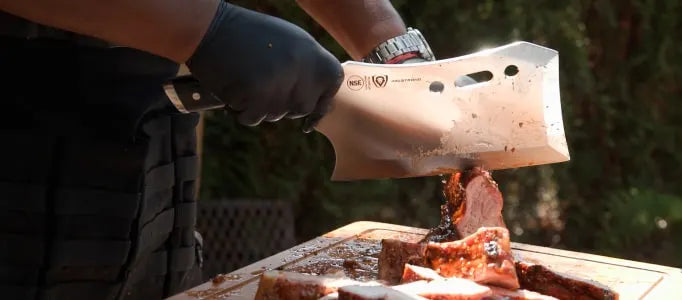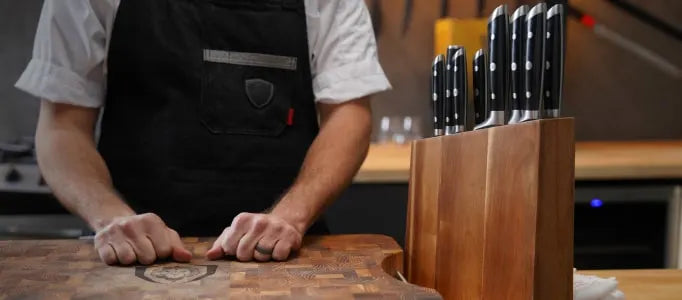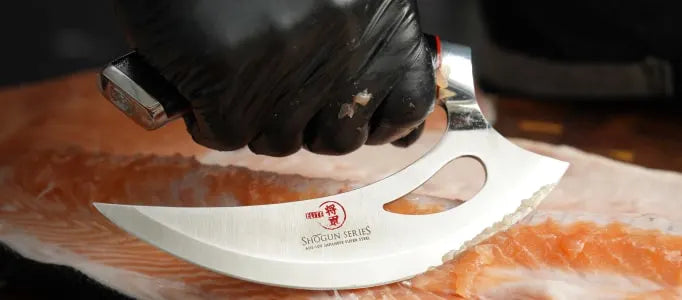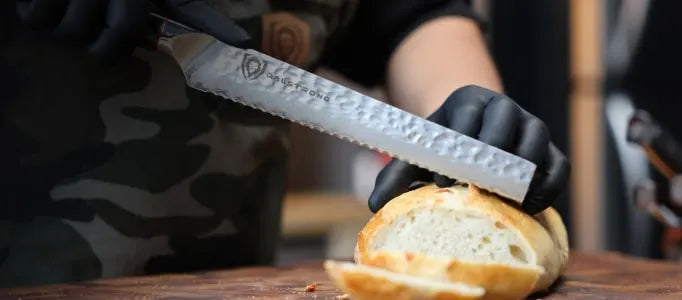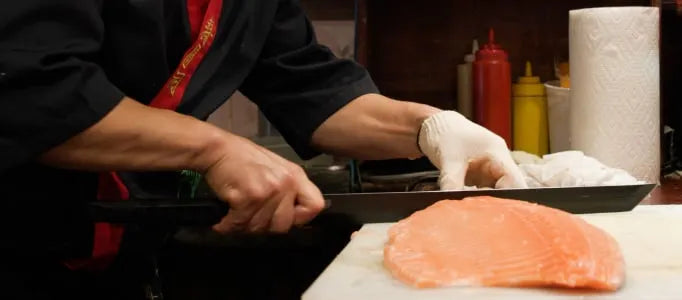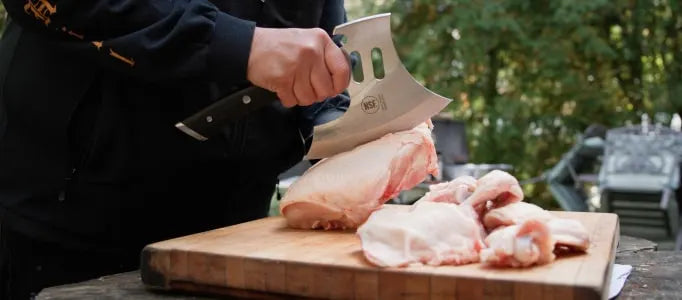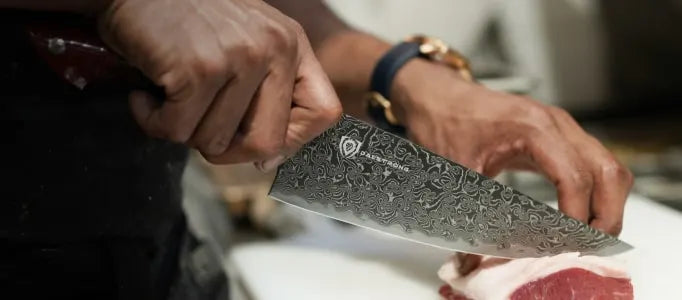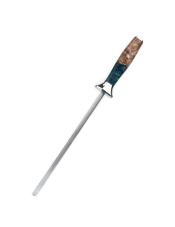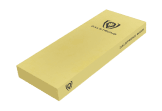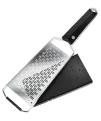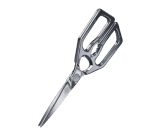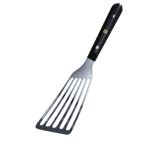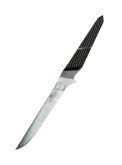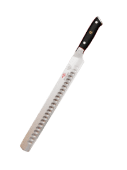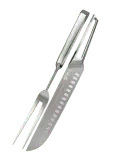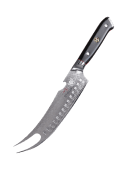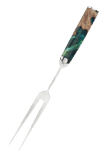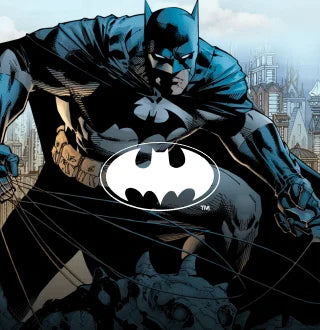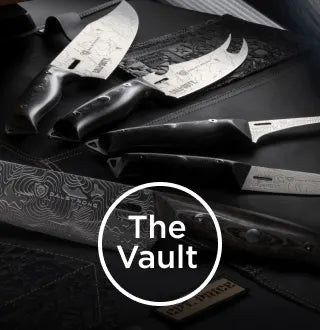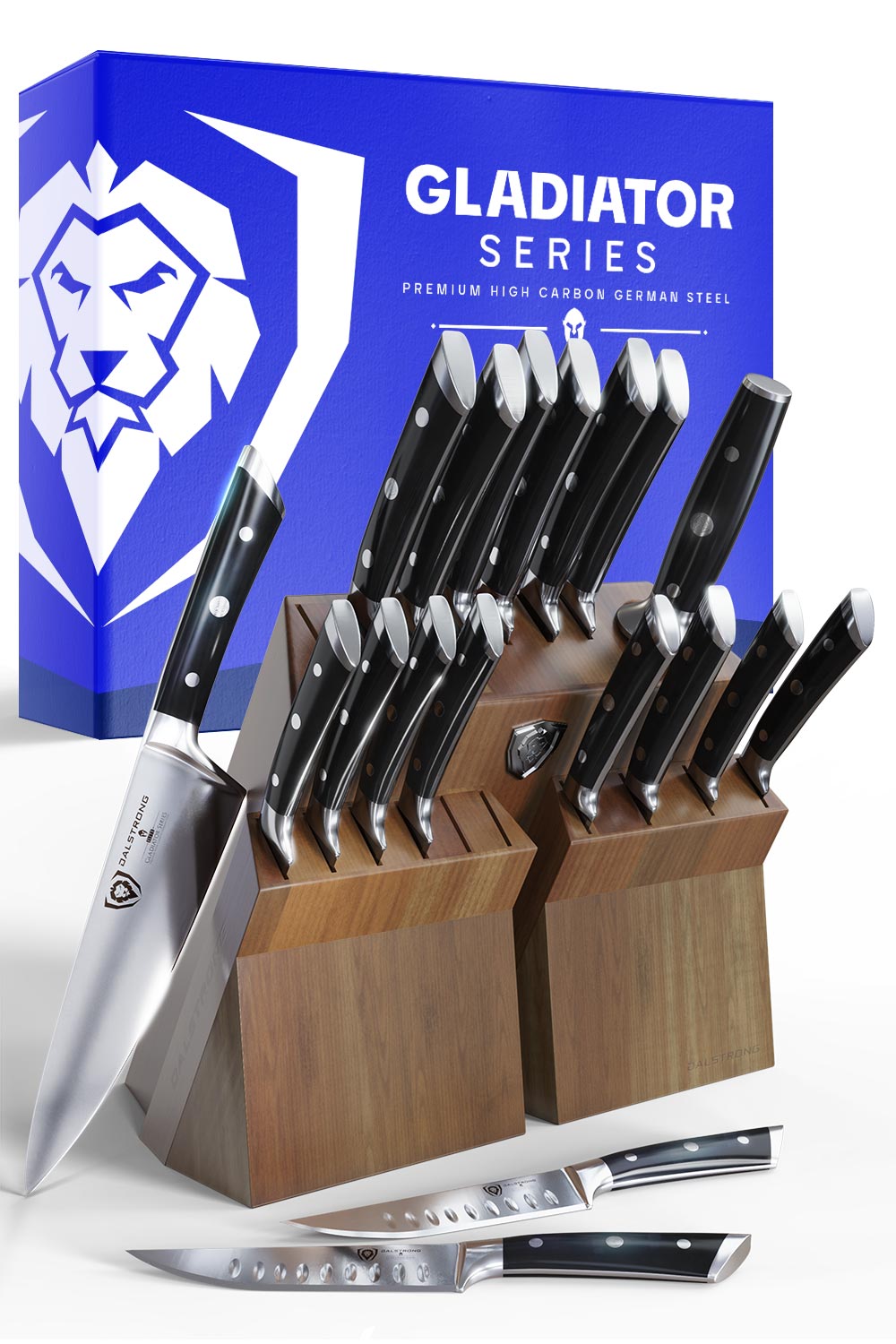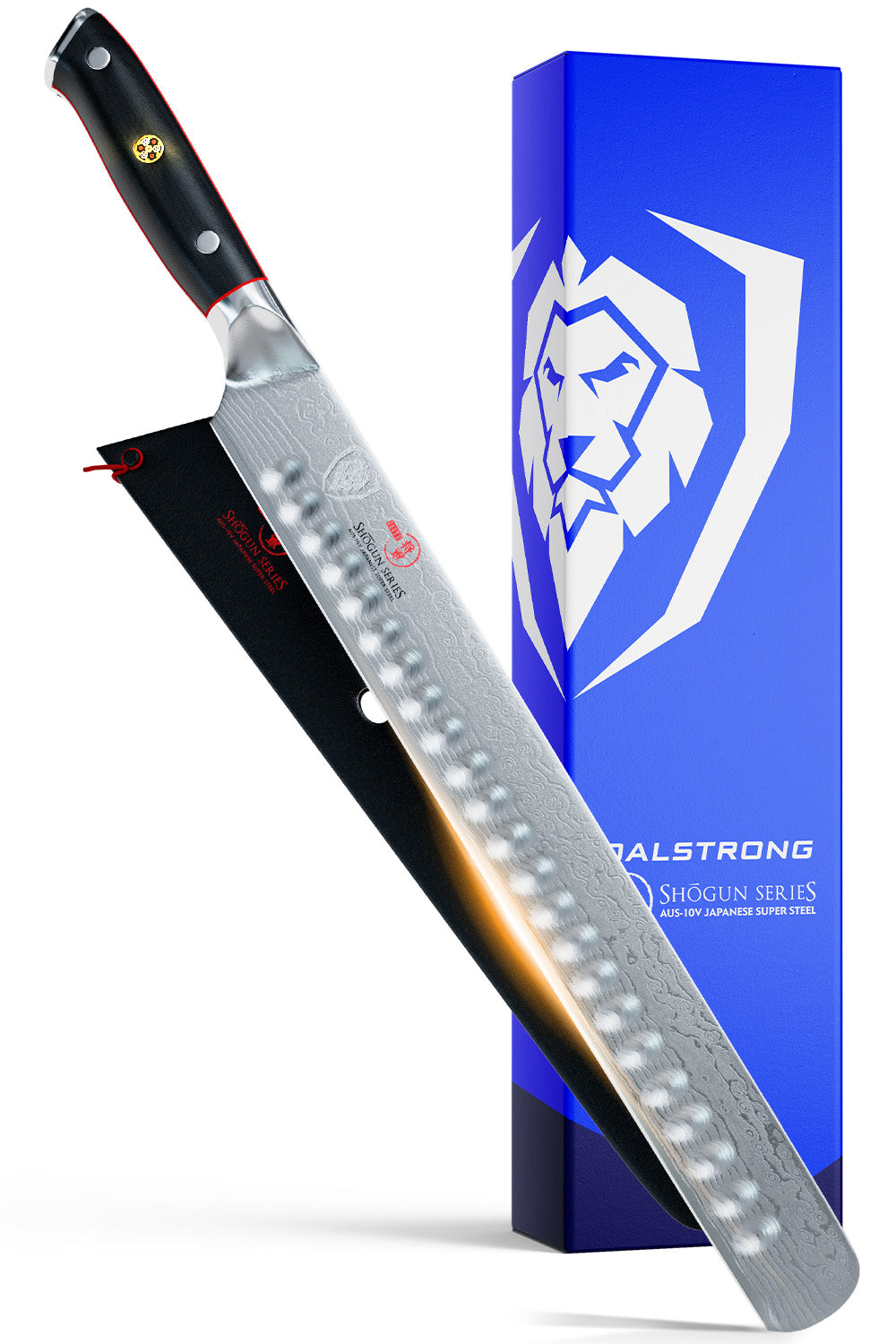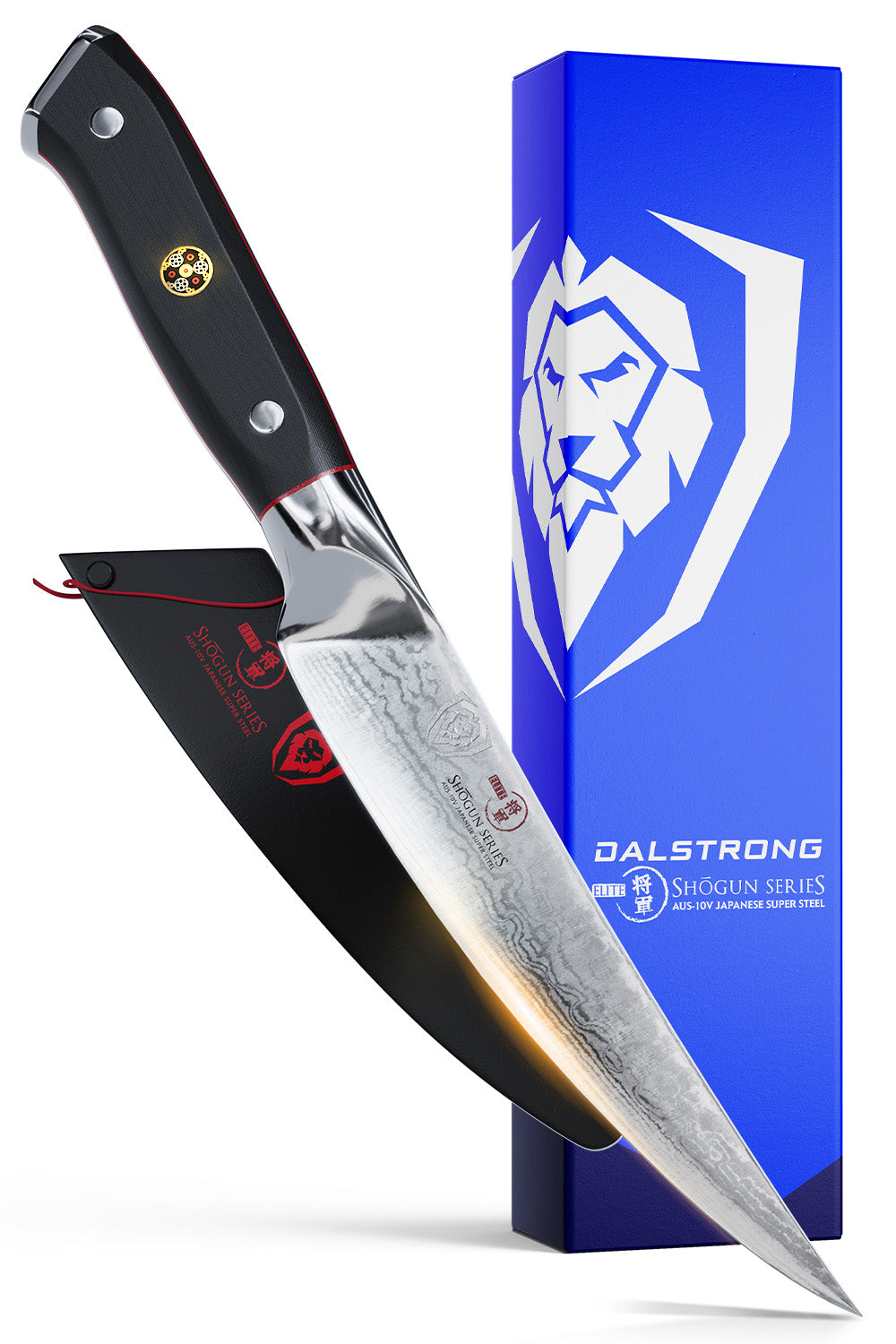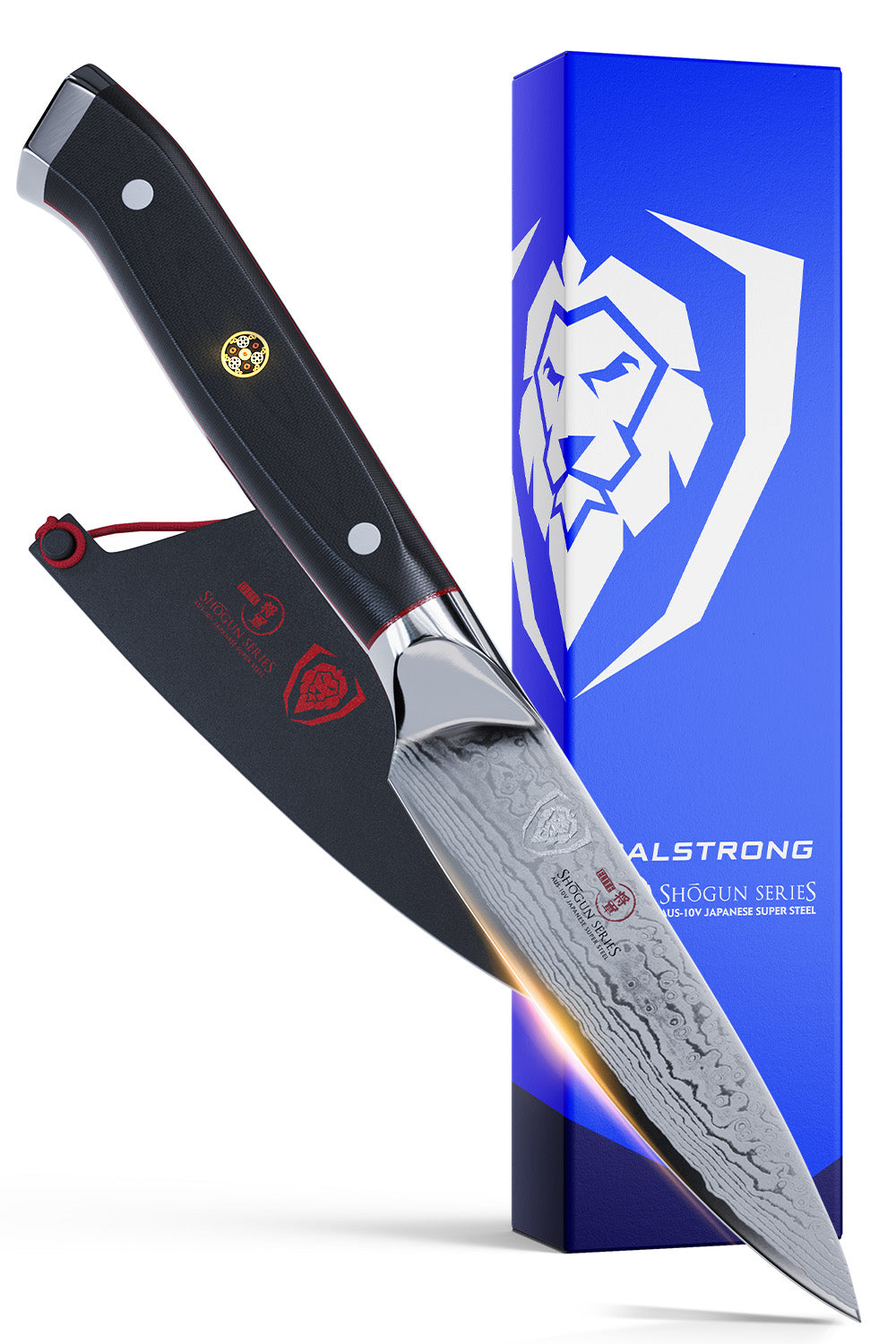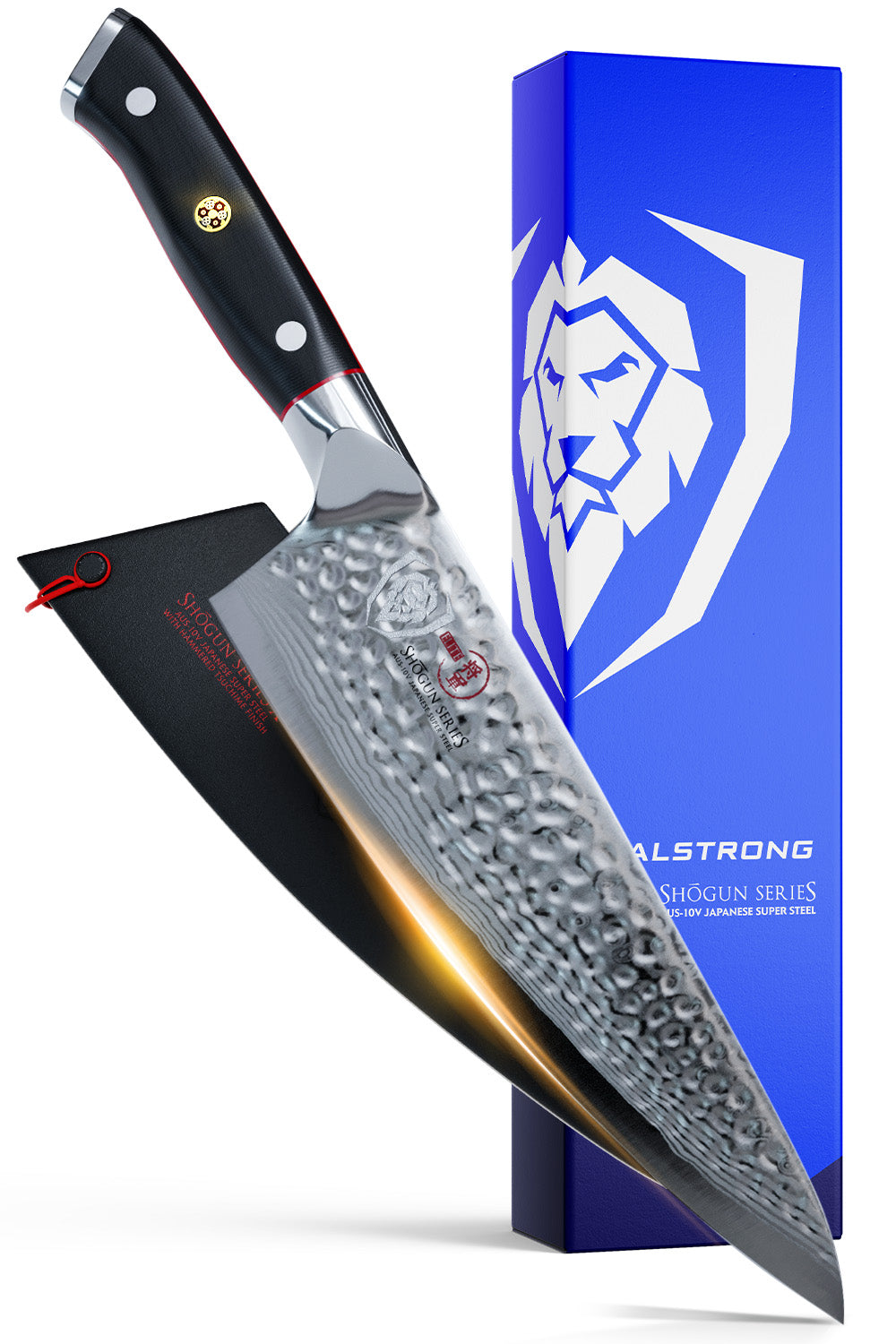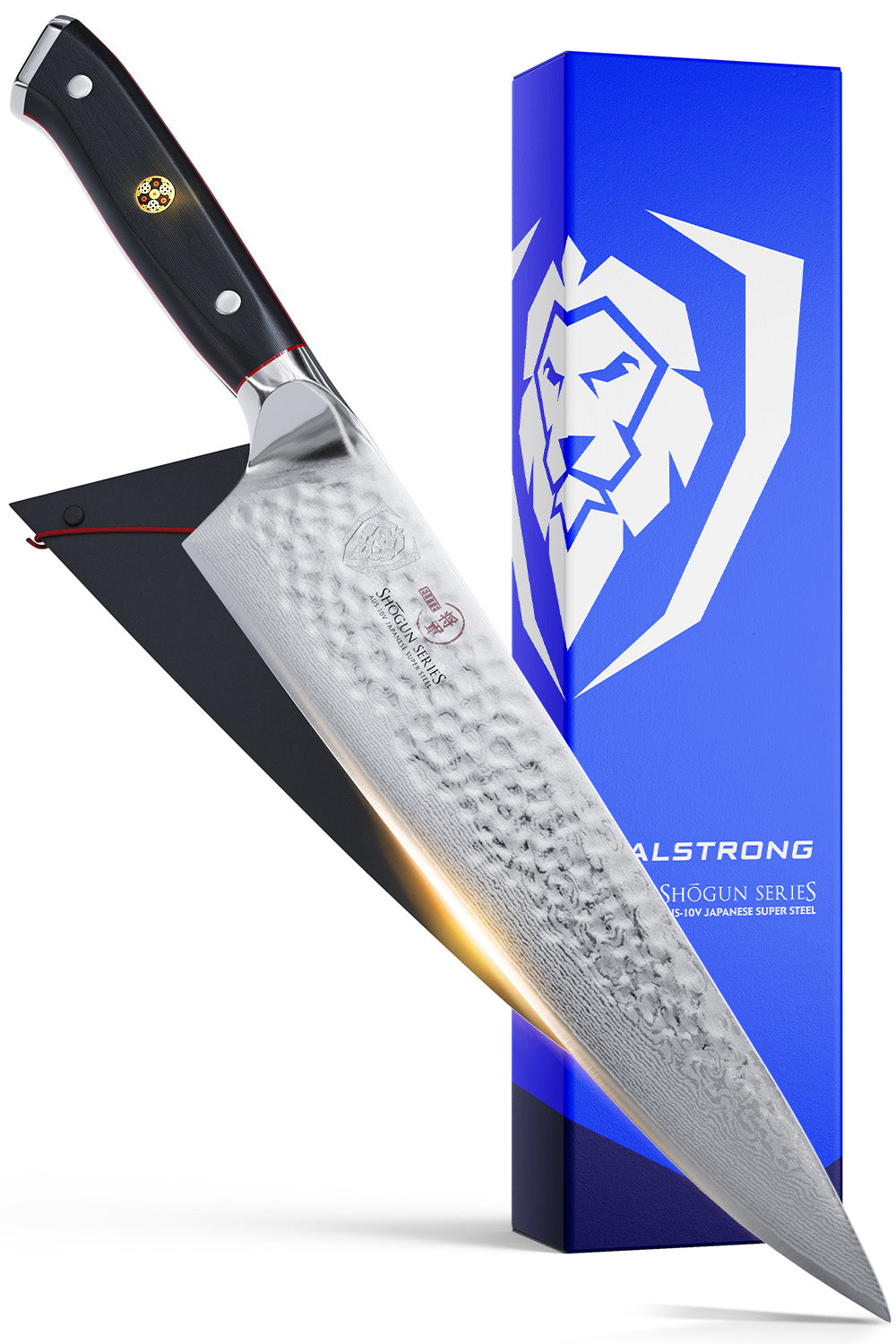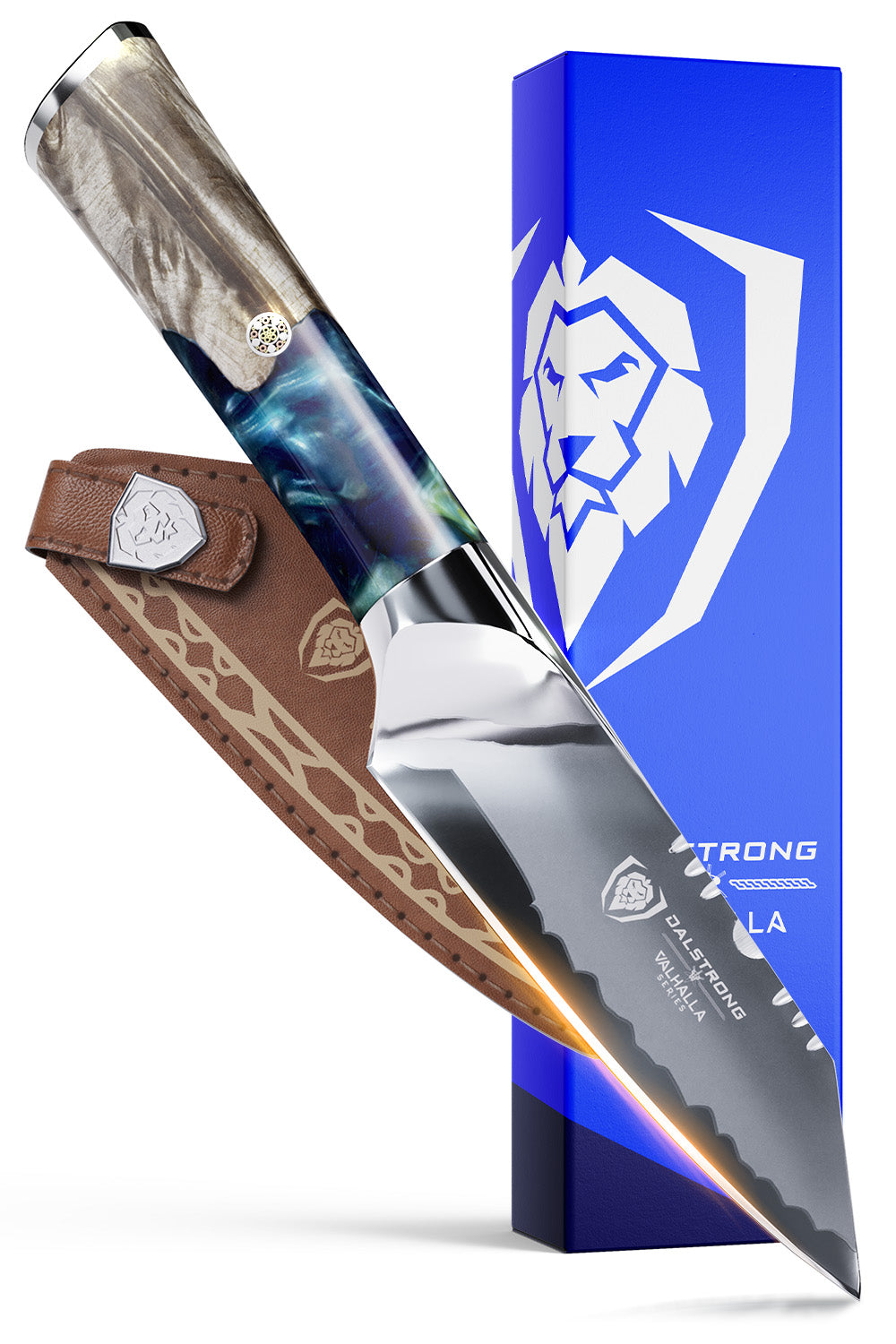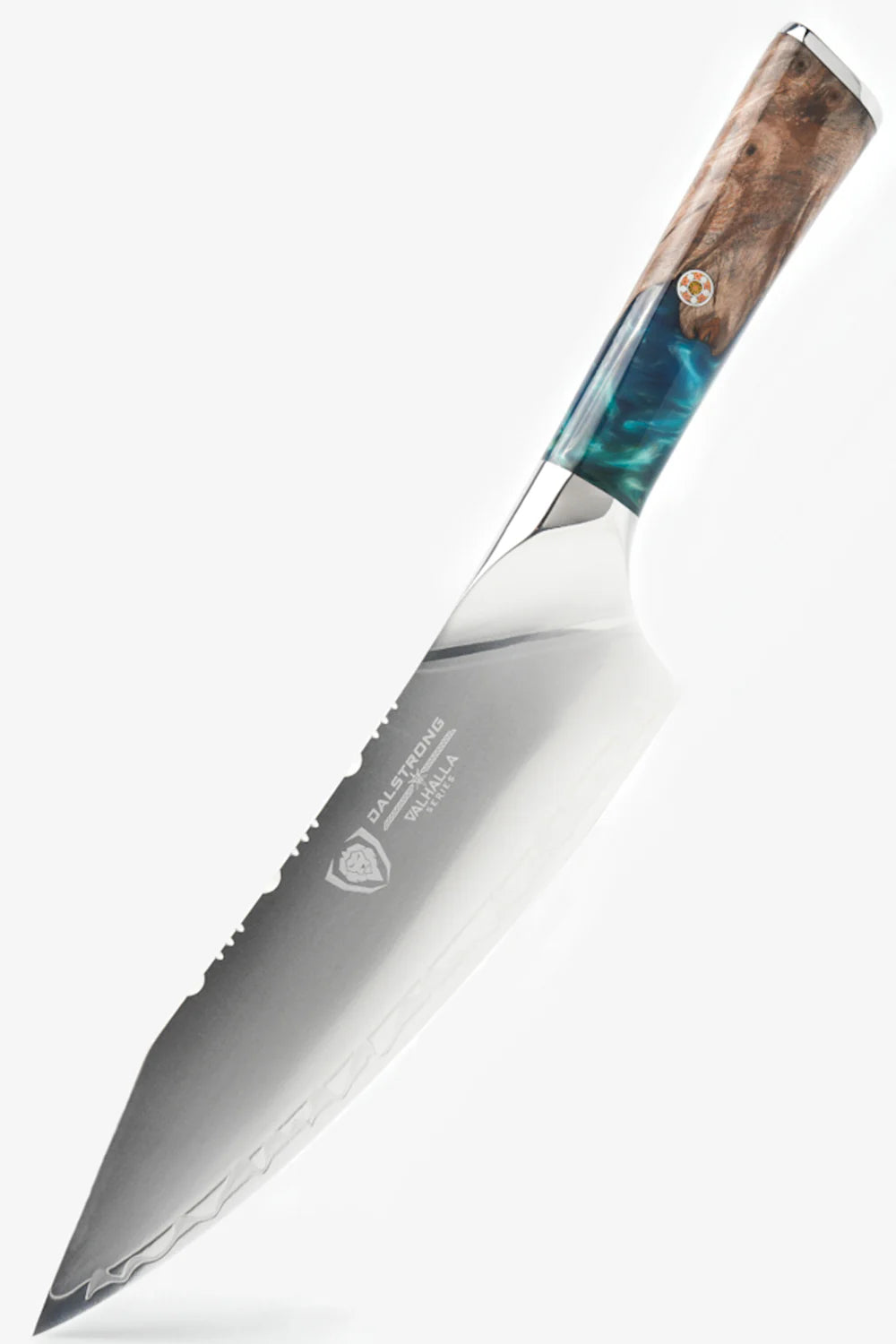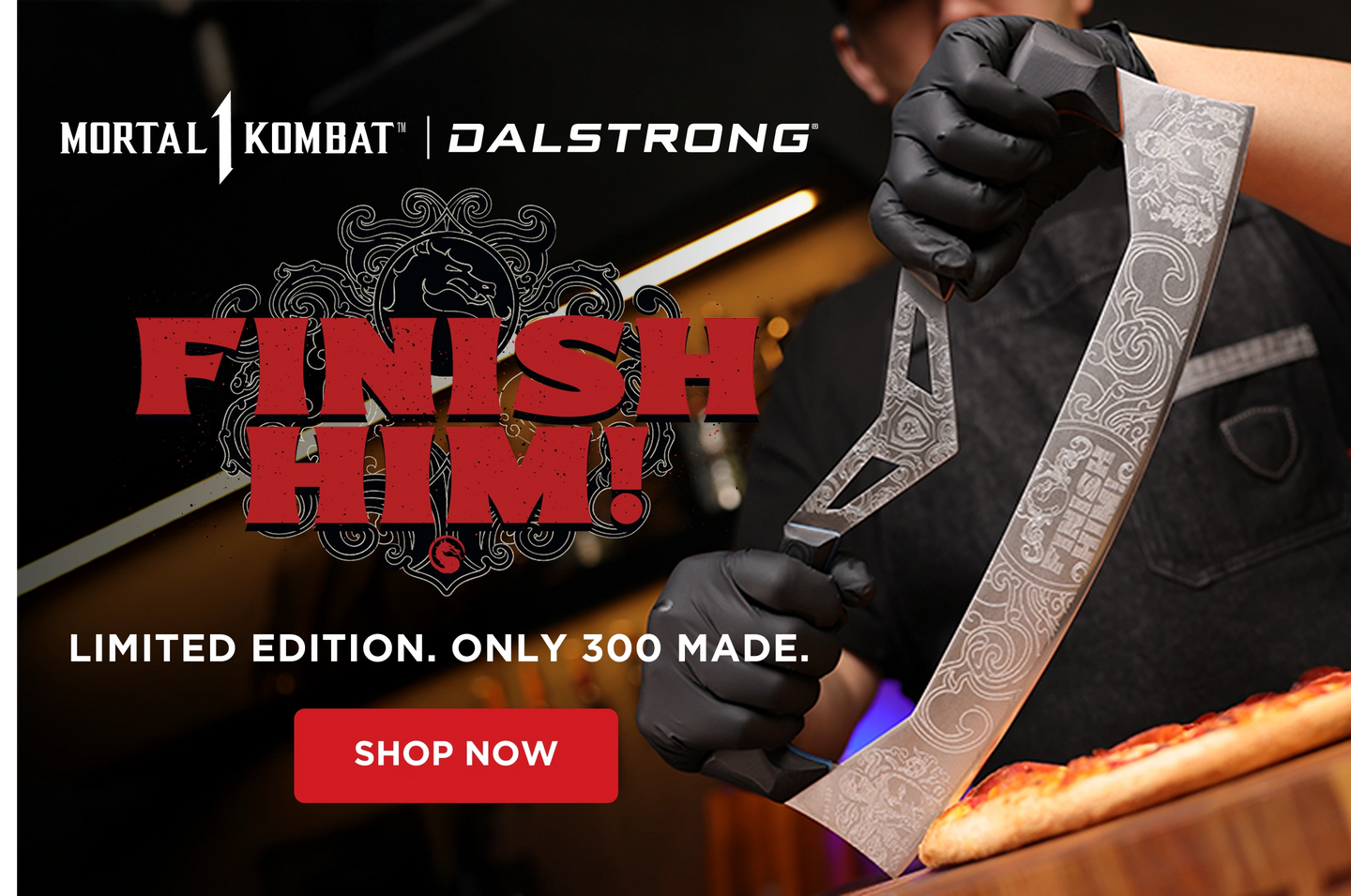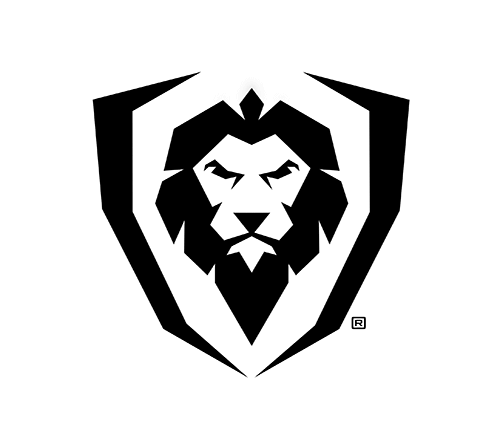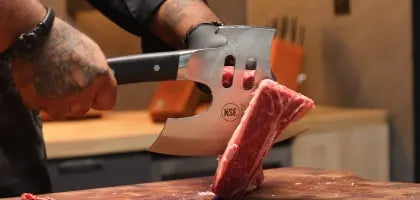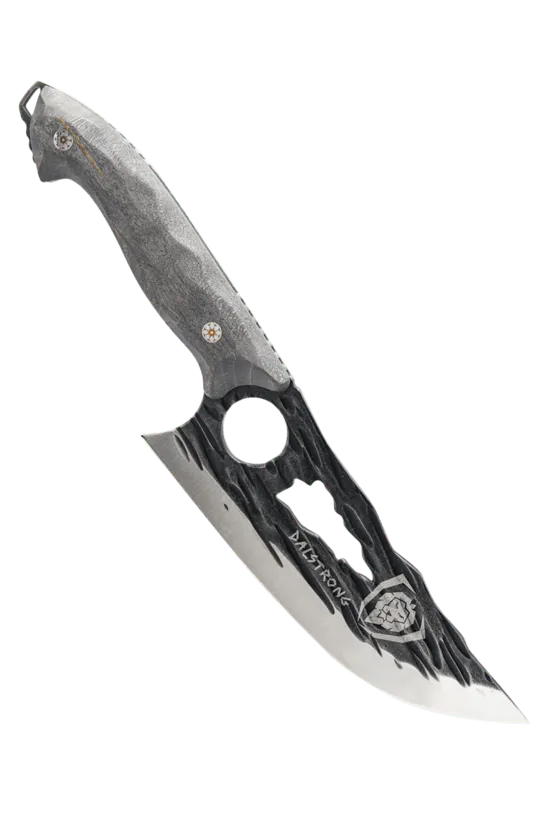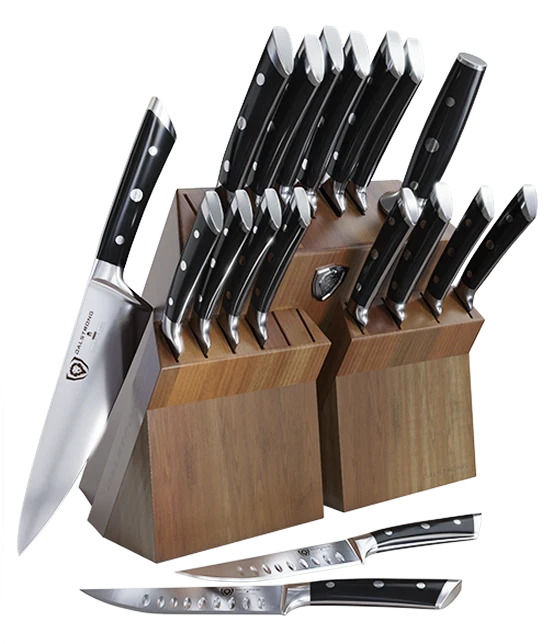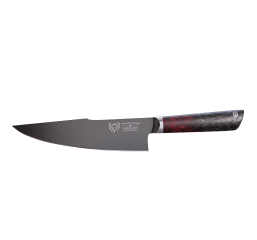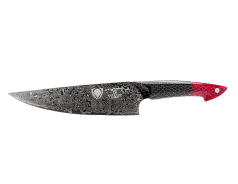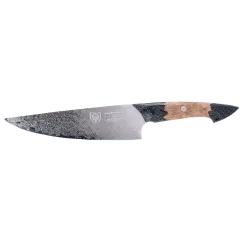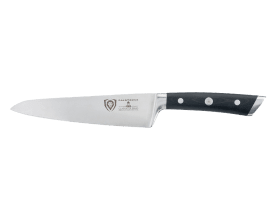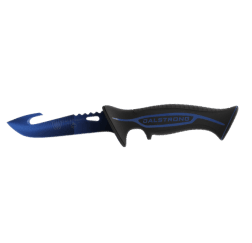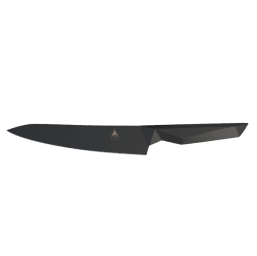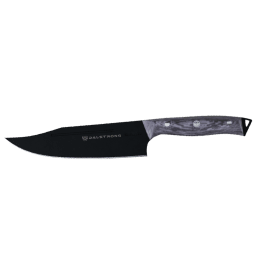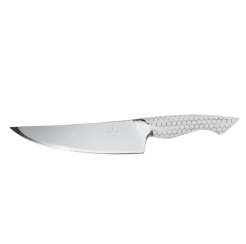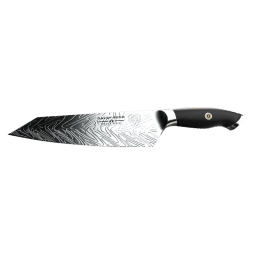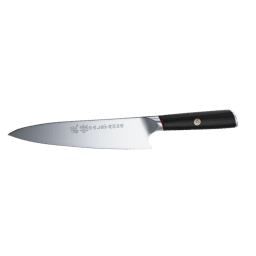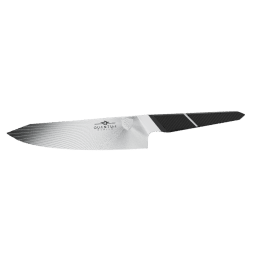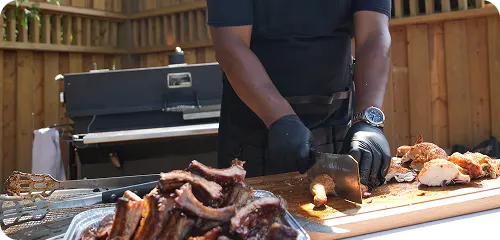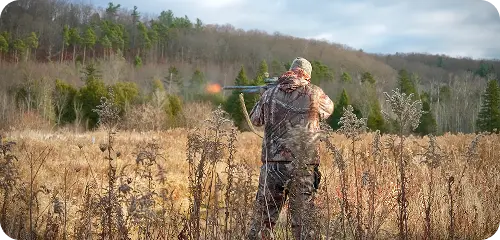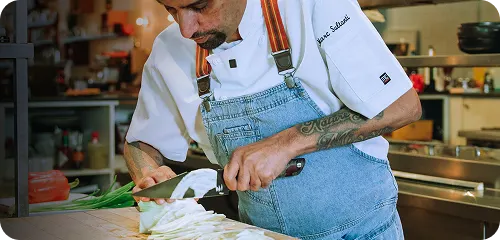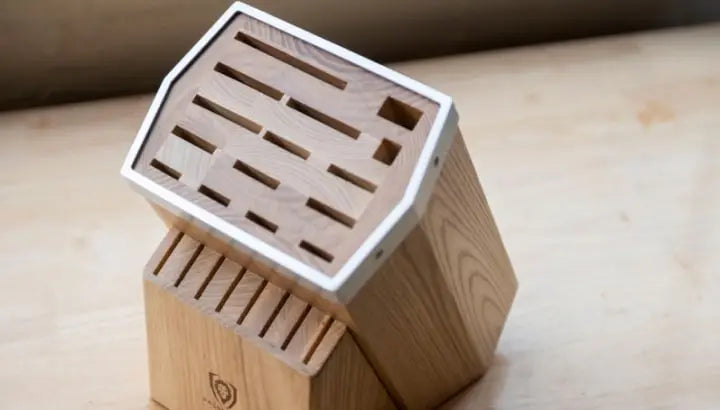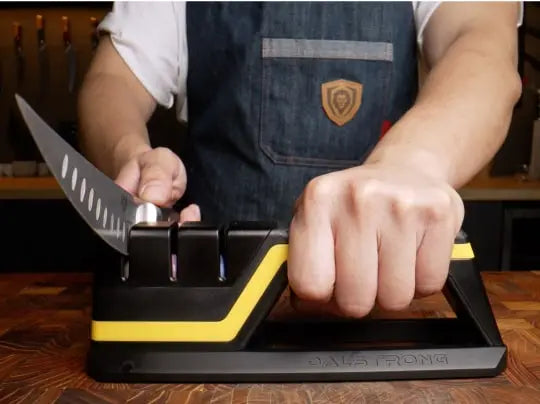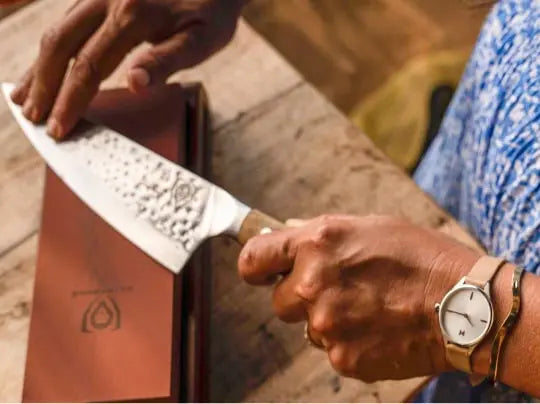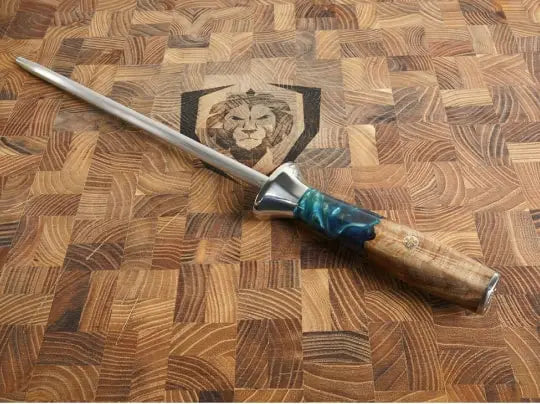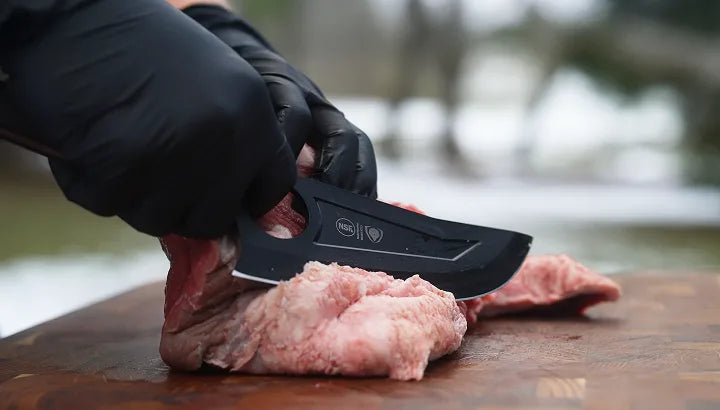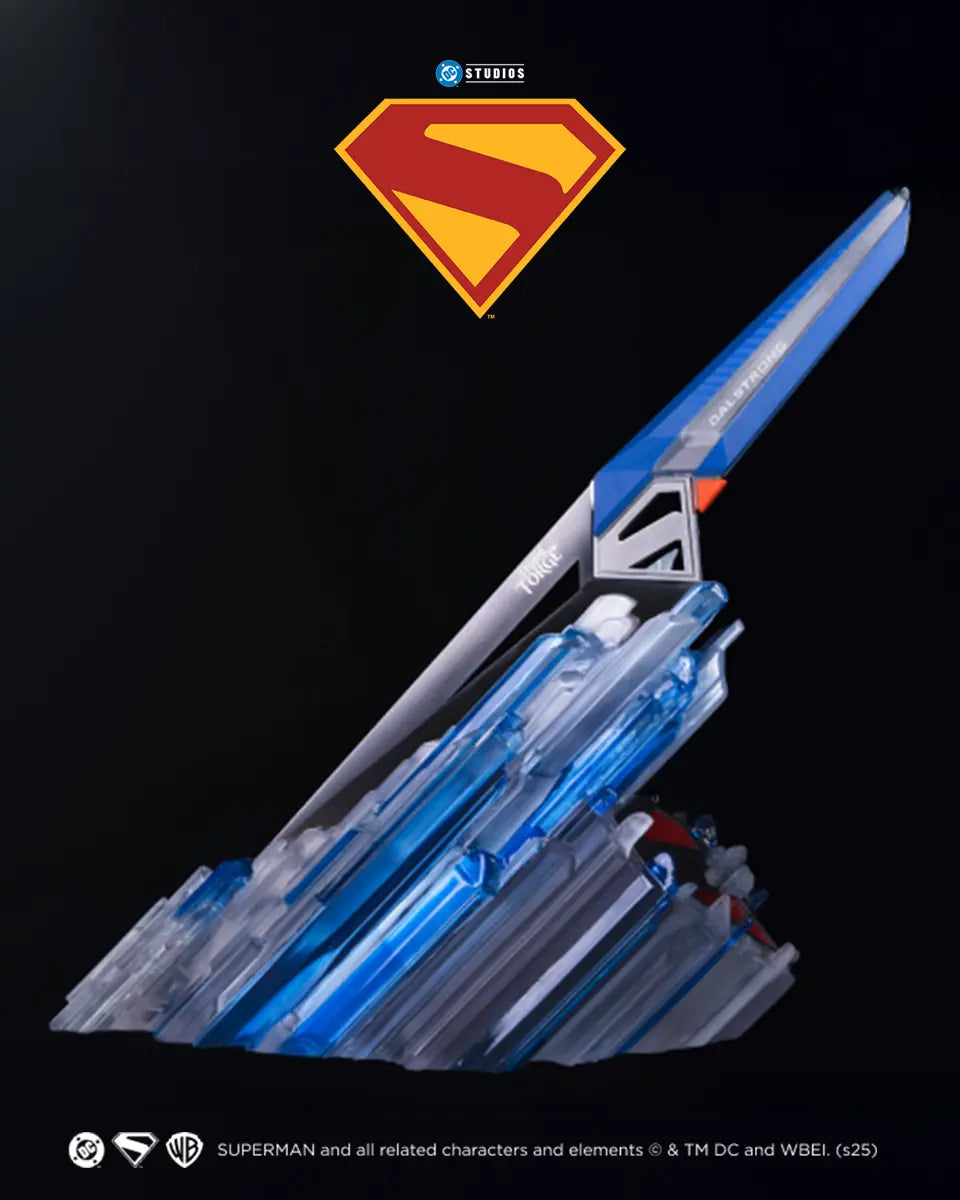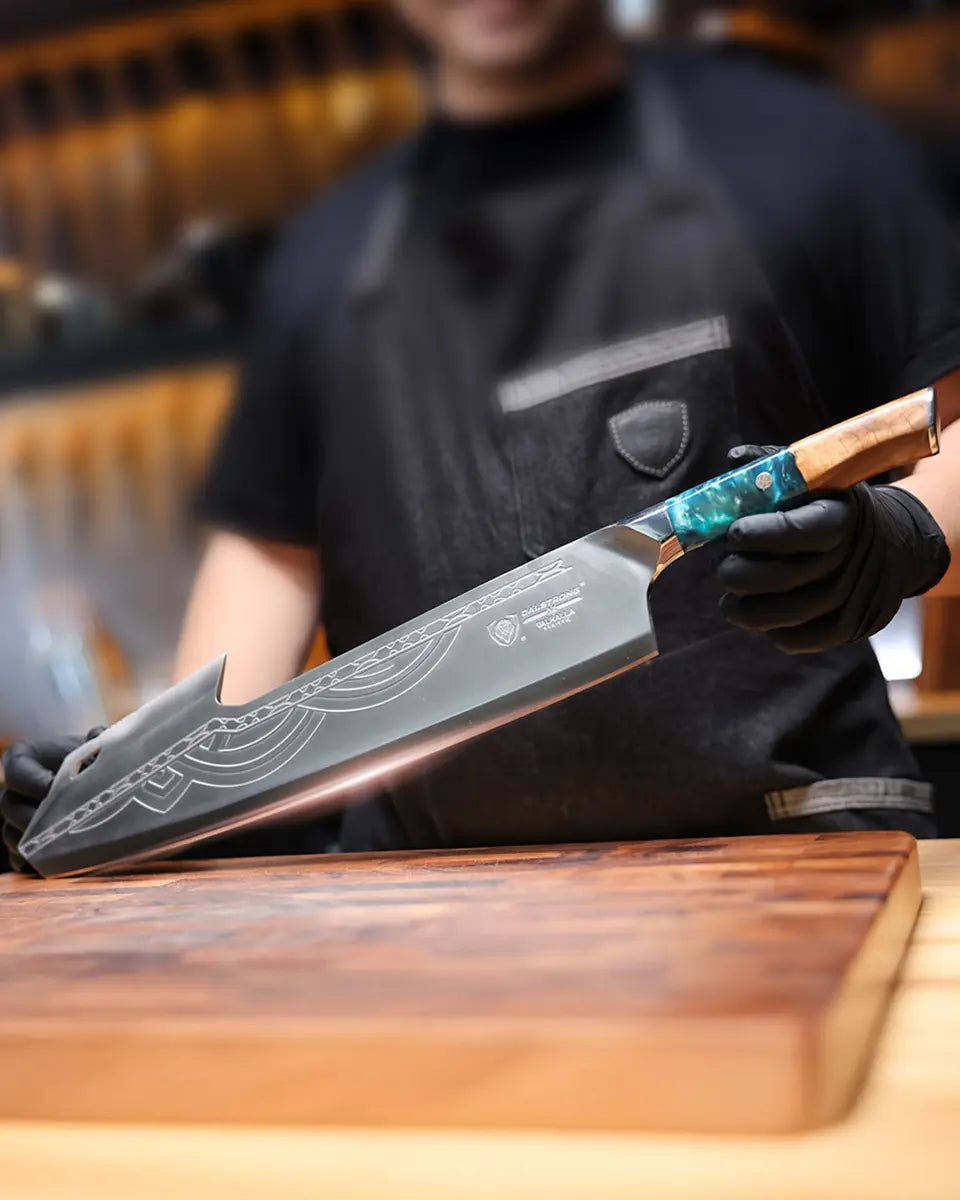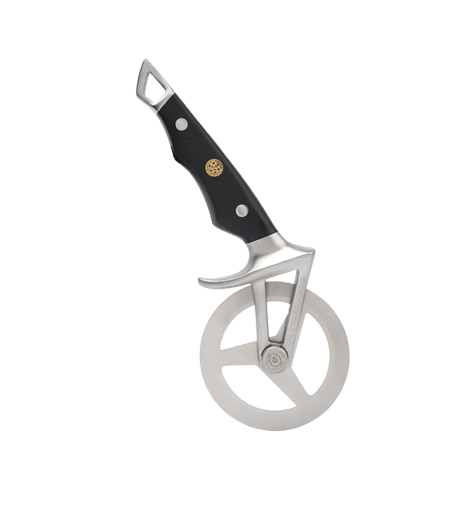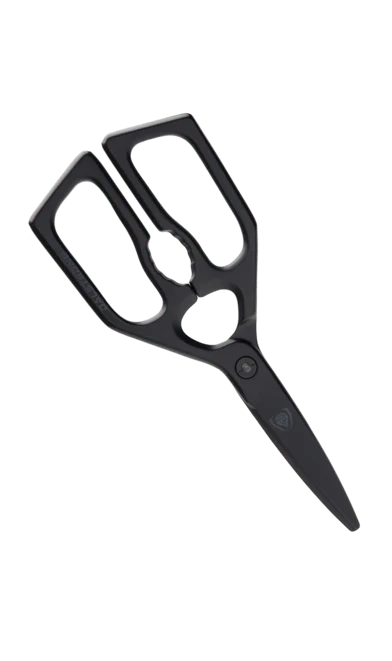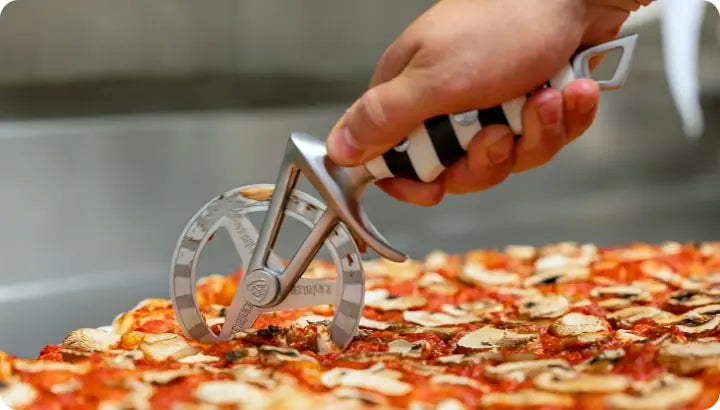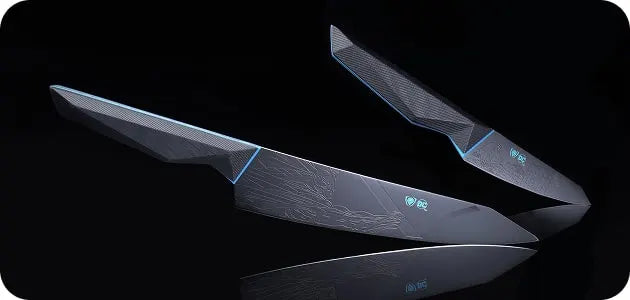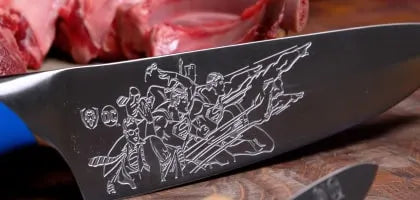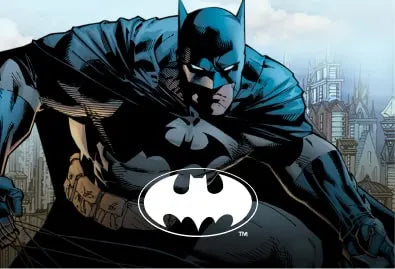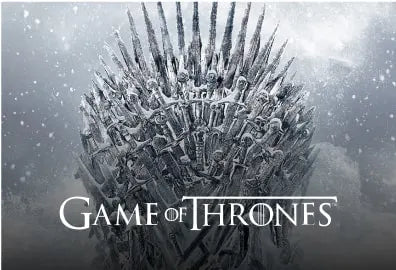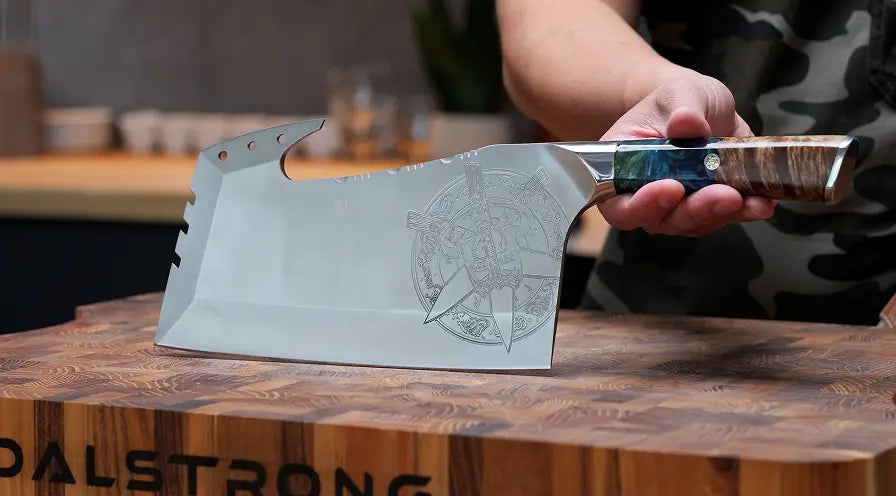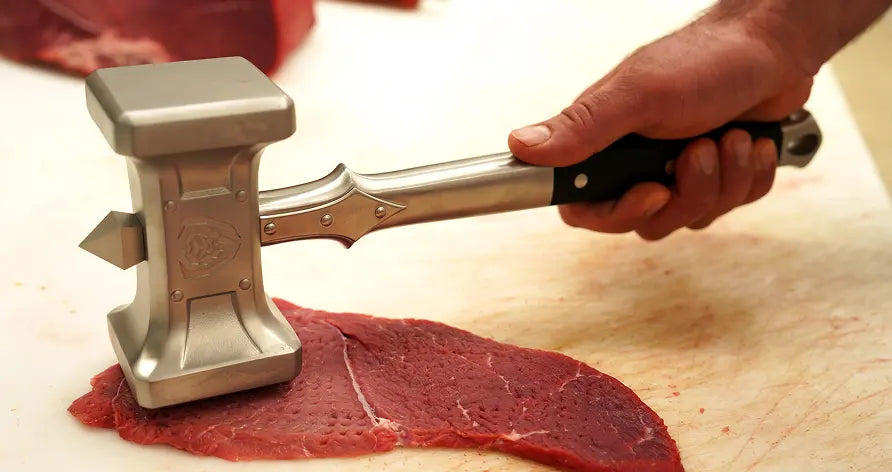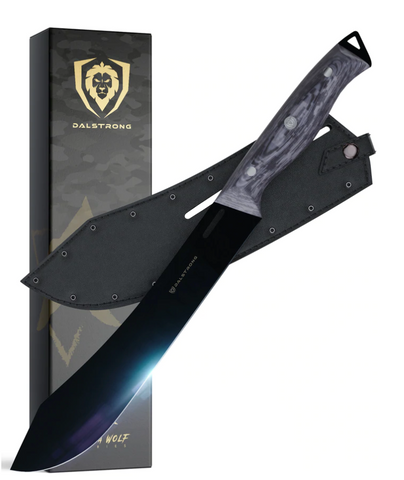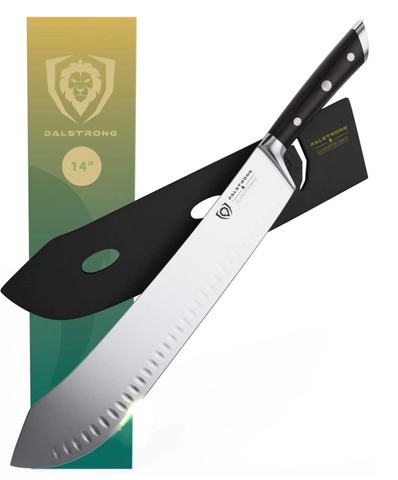Chef's Knife & Cleaver Hybrid 8" | The Crixus | Gladiator Series
A good steak cut, cooked to perfection is something dreams are made of, but if you’re new to cooking meat, it can get overwhelming when you need to pick a beef cut for your meal.

Shadow Black Series Steak Knives | Dalstrong ©
What are the Different Types of Beef Cuts?
- Chuck
- Rib
- Loin
- Round
- Flank
- Short Plate
- Brisket
- Shank
Table of Contents:
- Introduction to Beef Cuts
- Types of Beef Cuts Explained
- Best Butcher Knives for Different Types of Beef Cuts
- Frequently Asked Questions
1. Introduction to Beef Cuts
I think I’ve said this before and I won’t shy away from saying it again, I LOVE STEAK! A good steak cut, cooked to perfection is something my dreams are made of, but if you’re new to cooking steak, it can get overwhelming when you need to pick a beef cut for your meal.
What you need to know is that the USDA divides a cow into 8 regions. These 8 regions are called ‘primal cuts’ or ‘main cuts’. The 8 important primal beef cuts that you need to know are:
- Chuck
- Rib
- Loin
- Round
- Flank
- Short Plate
- Brisket
- Shank
The best and most expensive steaks are cut from the center of the steer which is the loin or rib section. And why the center? Well, that is because beef gets more tender as the distance from the horn and hoof increases.
Typically, a steer’s (young, neutered male cattle, primarily raised for beef) legs and neck muscles for most of the work, so those muscles are more firm, making these areas the toughest. The loin and ribs are at the center of the animal, which is why compared to the leg or neck muscles, they don't work much, resulting in more tender meat.
The loin and the rib section are at the very top of the animal, in the center, farthest away from the firm muscles. An example of the tender cuts in the loin and rib section are T-bone steak, strip steak, porterhouse, rib eye, rib steak, and filet mignon.
Is your mouth watering yet? Because SAME!
Now that you know a bit about how the cattle are divided for the cuts, let's take a look at the 8 primal cuts available for you to pick from.
2. Types of Beef Cuts Explained
1. Chuck
Where is it found?
Beef chuck comes from the forequarter that consists of parts of the neck, shoulder blade, and upper arm of the steer.
Tenderness Level of the Cut
Chuck roast is a tough cut of meat and it’s cut in a cylindrical or oblong shape in which the grain runs in the same direction as the long side of the meat.
Best Way to Slice the Beef Cut
Grab a sharp knife and slice the meat as thinly as possible, getting rid of any big, chewy chunks of fat or gristle. Unlike some other beef cuts, the chuck roast is made up of a few different muscles. Because of this, you may need to change your knife angle as you go, so do not forget to get a knife that is easy to maneuver.
Types of Chuck Beef Cuts
The most common types of cuts you will see for check are ground chuck, flat-iron steak, chuck short ribs, shoulder tender medallions, chuck pot roast, blade roast, boneless check short ribs, stew meat, country-style ribs, and top blade steak.
Best Recipes for for Chuck Beef Cut
This cut has a good deal of connective tissue which makes chuck a good choice of braised dishes like beef stew or pot roast. Both these dishes will help tenderize the tough cut. The high-fat content in this beef cut also makes it an excellent ingredient for ground beef burger patties and ground beef stew.
2. Rib
Where is it found?
The cow’s ribs and backbone make up the ribs. There are 13 pairs of ribs but only the last sections, i.e. the sixth through the twelfth rib, are in the primal section of the ribs. The others are in the chuck beef cut.
Tenderness Level of the Cut
Rib cuts are notable for the fatty marbling, tenderness, and distinctive flavor. Since they’re already tender, steaks and roasts from the beef rib can undergo various forms of dry-heating and remain tender.
Best Way to Slice the Beef Cut
If the ribeye is bone-in, use a small paring knife to cut the meat away from the bone. Once the ribeye steak is boneless, slice the meat against the grain into slices, between ½ and 1 inch thick, depending on how you like the steak.
Types of Rib Beef Cuts
The types of portion cuts you can find for ribs are short ribs, ribeye steak, cowboy steak, ribeye roast, ribeye filet, and back ribs
Best Recipes for Rib Beef Cut
Rib Beef cuts make for desirable steaks and roasts. The rib primal cuts are best for grilling, roasting, searing, or frying. Keep in mind that these are not suited for slow cooking.
3. Loin
Where is it found?
This is located at the top of the steer, directly behind the ribs.
Tenderness Level of the Cut
Since this is not a heavily used muscle, loin makes very tender cuts compared to more muscular cuts.
- Sirloin Cuts: This cut is the least tender of the 2 subregions, however, it is arguable more flavorful.
- Short Loin Cuts: Because this cut is closer to the center of the cow, it is a more tender cut than sirloin.
Best Way to Slice the Beef Cut
Remember that with any steak, you should always slice against the grain, which means against the direction that the muscle fibers run. So now cut steaks that are less than 1 ½ inches, or it will cook too fast and you are very likely to overcook it.
Types of Loin Beef Cuts
The loin primal cut has 2 parts- short loin and sirloin. Sirloin is the rearmost cut of the loin region. The short loin is similar to sirloin cuts but is closer to the center of the cow.
- Sirloin Steak- Common sirloin cuts include sirloin steak, top sirloin, bottom sirloin, tri-tip roast, and tri-tip steak.
- Short Loin Steak- Common short loin cuts include NY strip, T-Bone, porterhouse, tenderloin filet, filet mignon, and strip loin.
Best Recipes for this Beef Cut
The top sirloin is a cut from the loin that offers amazing flavor. A thick cut of this meat is ideal for grilling, broiling, sauteing, or pan-frying. While the top sirloin does not have as much marbling as a rib eye or New York Strip, it certainly has enough to provide good flavor for a steak.
4. Round
Where is it found?
This can basically consist of the back leg of the steer. Muscles from the round are fairly lean. It’s found at the cow’s rump and hind legs.
Tenderness Level of the Cut
Because the leg and rump get a lot of exercise, this cut is a tough one.
Best Way to Slice the Beef Cut
Before or after cooking, cut the steak against the grain to break the muscle fibers down. Remember that this is tough meat and doing this will make the steak easier to chew and make it feel more tender when you eat it. You can also use a powdered meat tenderizer to break down the meat.
Types of Round Beef Cuts
This beef has a few subprimal cuts- the top round, the bottom round, and the knuckle. The bottom round is where we get the rump roast and eye of round. The top and the bottom round steak are lean and do not contain much collagen. Collagen is a type of protein that turns into gelatin when braised slowly. This means that the braised rump roast isn’t as succulent as braised chuck roast.
Best Recipes for Round Beef Cuts
The best use of round roasts is to roast them slowly so they can turn out medium-rare. This cut can also be sliced thinly and used for sandwiched or even served as roasts. Remember that slicing thinly and against the grain is very very crucial.
5. Flank
Where is it found?
The flank is located below the loin. This beef cut has no bones and is very flavourful.
Tenderness Level of the Cut
Flank steak is a tough beef cut. Beef flanks can be cooked on the grill as well but because it has tough muscle fibers, they can get tougher if it gets overcooked.
Best Way to Slice the Beef Cut
Whether you cut the flank steak raw or after cooking, the best and most efficient way to slick the steak is across the grain.
Types of Flank Beef Cuts
The most popular flank cuts are flank steak and London broil.
Best Recipes for Flank Beef Cuts
The best way to cook a flank steak is to grill it quickly at a high temperature. I suggest you try marinating the meat first as it can help it from drying out. In my opinion, the best way to save it from drying out is by avoiding overcooking it. When you’re ready to serve the flank steak remember to slice thinly, against the grain, so it isn’t chewy.
Beef flank is also good for braising and it’s often used to make ground beef.
6. Short Plate
Where is it found?
Short plate cuts are found near the stomach or abdomen area of the cow.
Tenderness Level of the Cut
This is a rather tough cut of meat and is also fattier compared to the other beef cuts.
Best Way to Slice the Beef Cut
In order to maximize the tenderness of the meat, once it has been cooked or it has been grilled, you will want to slice it against the grain or perpendicular to the grain. This is because by cutting the grain, it intensifies the tenderness of the steak.
Types of Short Plate Beef Cuts
Some popular short plate beef cuts are inside/outside skirt steak, hanger steak, beef bacon, ground beef, and short ribs.
Best Recipes for this Beef Cut
With this beef cut, you can make fajitas, pastrami, skirt steak, Philadelphia steak, and short ribs. This beef cut may also be cured, smoked, and thinly sliced to make beef bacon.
7. Brisket
Where is it found?
This is found near the steer’s breast area or lower chest area. Brisket cut is low in fat content as it is one of the cow’s most used muscles.
Tenderness Level of the Cut
Brisket is usually tough and contains a substantial amount of fat.
Best Way to Slice the Beef Cut
You want to slice against the grain of the beef cut. The grain of any meat is the alignment of muscle fibers. When intact, the muscle fibers are strong and chewy which is why it is important to slice against the grain. You can check out this guide for more details on how to cut a brisket.
Types of Brisket Beef Cuts
The brisket is divided into 2 parts:
Point Cut: This is the fatty part of the brisket which is called the deckle.
Flat Cut: Also known as the first cut, has the deckle removed which makes it leaner and causes it to lay flat.
Best Recipes for Brisket Beef Cuts
You cab marinade and rub the brisket to tenderize it, followed by cooking it low and slow. This will make the brisket melt in your mouth. Briskets are also widely used for barbecue, corned beef, or pastrami.
8. Shank
Where is it found?
This beef cut comes from the leg portion of a steer or heifer. The corresponding cuts of beef are the shin or the foreshank and the leg or the hindshank.
Tenderness Level of the Cut
Shank is arguably the toughest, cheapest cut of beef. Due to the constant use of this muscle by the animal, this beef cut tends to be tough, dry, and sinewy. It is best when cooked for a long time in moist heat.
Best Way to Slice the Beef Cut
The best way to slice up a Shank beef cut is the deboning method. For this, you will have to cut straight through the length of the bone until you reach the bone. Then, take a boning knife and make small cuts between the bone and the muscle. Make such cuts all around the bone to completely debone the beef shank and then go ahead and slice it up.
Types of Brisket Beef Cuts
As mentioned above, the cut is divided into 2 parts:
- The cuts of beef around the shin are called the foreshank.
- The cuts of beef around the leg are called the hindshank.
Best Recipes for Shank Beef Cuts
You will often find this cut used for stew or soup meat, or prepared as a popular Osso Buco (a specialty of Lombard cuisine) dish which requires braising to make the meat tender.
3. Best Butcher Knives for Different Types of Beef Cuts
1. Bull Nose Butcher Knife 8”- Shogun Series
This knife is thoughtfully designed, keeping comfort and stamina in mind. Sail through the flesh, breakthrough cartilages, and trim the fat from beef, pork, poultry, fish, and other larger birds and animals without getting lost in the meat.
Pros:
- The 8” blade length provides exceptional control and allows the cook to use it to go further, longer, and with less fatigue.
- The round-tip of this badass knife is engineered to perfection and increases the strength of the blade tip, ensuring cleaner cuts, no matter how tough the beef cut is.
- The knife is rust and corrosion-resistant, meaning it will stay cleaner and last longer.
Cons:
- If you are new to the kitchen, a butcher knife might get too intense for you to handle. For new cooks, I suggest you start practicing with a professional chef’s knife before you get the grip of this tool.
- If you plan on tackling a large chunk of meat, you might want to go for a butcher’s knife with a slightly longer blade.
2. Bull Nose Butcher Knife 10”- Delta Wolf Series
This machete-like knife in your hand is all you need to feel truly bold. The formidable blade of this knife is strong and durable enough to handle any challenge that is thrown it's way. If you are looking for a blade that will help you tackle a big roast with ease and precision, then this is the blade for you.
- The blade of this knife is hand sharpened to 8-12 degrees. This ensures you get longer, cleaner cuts of meat with minimal food drag.
- The weighted nose of this knife gives your impeccable control, making skinning and serving the meat both, easier and more efficient.
- The non-reflective titanium-nitride coating adds corrosion resistance and toughens the blade, making it the perfect tool to slice through tough beef cuts
Cons:
- While this is a great tool to cut through big chunks of meat, if you need more precision when doing the job, you can also go for a cleaver.
- This butcher’s knife comes at a slightly higher price. This is why I would recommend you invest in this knife only if you have prior experience with such tools.
3. Bull Nose Butcher Knife 10”- Gladiator Series
This powerhouse tool is great at breaking, sectioning, and portioning your meat. The bulbous nose of the blade is designed to provide a weighted end and add length to the blade, that will ensure clean cuts of meat.
Pros:- This knife will make it very easy for you to work with any kind of meat, then be it beef, pork, or chicken.
- You can also effortlessly trim briskets and break down larger chunks of meat without losing any.
- The handle of this knife is designed for maximum comfort and maneuverability, which is required when you need to slice up chunky meat.
- If you are looking for something that will help you with both, tackling larger pieces of meat and performing delicate tasks like peeling and skinning, you can go for one of the chef’s knives or boning knives.
- If you are new to working with steak or are new to cooking in general, you might want to go for a less intimidating blade to get you started.
4. Butcher’s Breaking Cimiter Knife 12”-Gladiator Series
Break down even the larger cuts of meat quickly and with ease with this monster from the Gladiator Series. This slice master is a pro in nose-to-tail sectioning and portioning. This knife will allow you to get make cuts in a smooth and single motion, without sawing the meat. This also helps the cook or butcher work faster, longer.
Pros:- Slice through juicy steaks like butter. This blade will work tirelessly to ensure you get paper-thin brisket slices or glide through the larger game like elk and moose with ease.
- The rock-hollow divots on the blade minimize stuck-on food and reduce friction to ensure a more comfortable cutting experience.
- This knife might look big but is very easy to clean and maintain.
- This is an amazing knife to work with but keep in mind that it’s a 12” blade. This knife is not meant for occasional cooks. I recommend you pick up this blade only if you have prior experience with butcher knives.
- Some chefs might prefer a wide blade that would also help them scoop and plate the food. If that is the case, you can check out these broad-bladed butcher knives as well.
5. Extra Long Bull Nose Butcher Knife 14”- Gladiator Series
This one’s a big gun. The 14” inch blade provides scalpel-like sharpness, making sure you get clean and long cuts. Not only will this knife be a great addition to your kitchen arsenal but will also make you feel like the king of the kitchen when you hold one of these in your hand.
Pros:- The weighted nose of this blade enhances the knife’s strength and provides more control when making large cuts.
- The curved geometry of the blade improves the knife’s efficiency when it has to perform tasks like skinning and portioning meat.
- The handle of this knife is designed to give you maximum support, comfort, and grip while minimizing the effort that would go into using such a long blade.
Cons:
- If this is the knife you want, make sure to give up some space in your kitchen because a 14” butcher’s knife is bound to take up some space.
- If you are new to cooking, you might want to get started with a smaller, less intimidating blade size. With practice and skill, you can slowly plan on investing in a butcher's knife.
4. Frequently Asked Questions
What are the 9 cuts of beef?
The 9 primal cuts of beef are chuck, rib, loin, sirloin round, flank, short plate, brisket, and shank.
What are the best cuts of beef in order?
Some of the best cuts of beef to order are rib eye, striploin, top sirloin, tenderloin, and top sirloin cap.
What are all the different cuts of beef?
The different cuts of beef are chuck, rib, short loin, sirloin, round, short plate, brisket, flank, and shank.
What are the 8 main cuts of beef?
The 8 primal cuts of meat are chuck, rib, loin, round, flank, short plate, brisket, and shank.Check Out Dalstrong Butcher Knives Today



